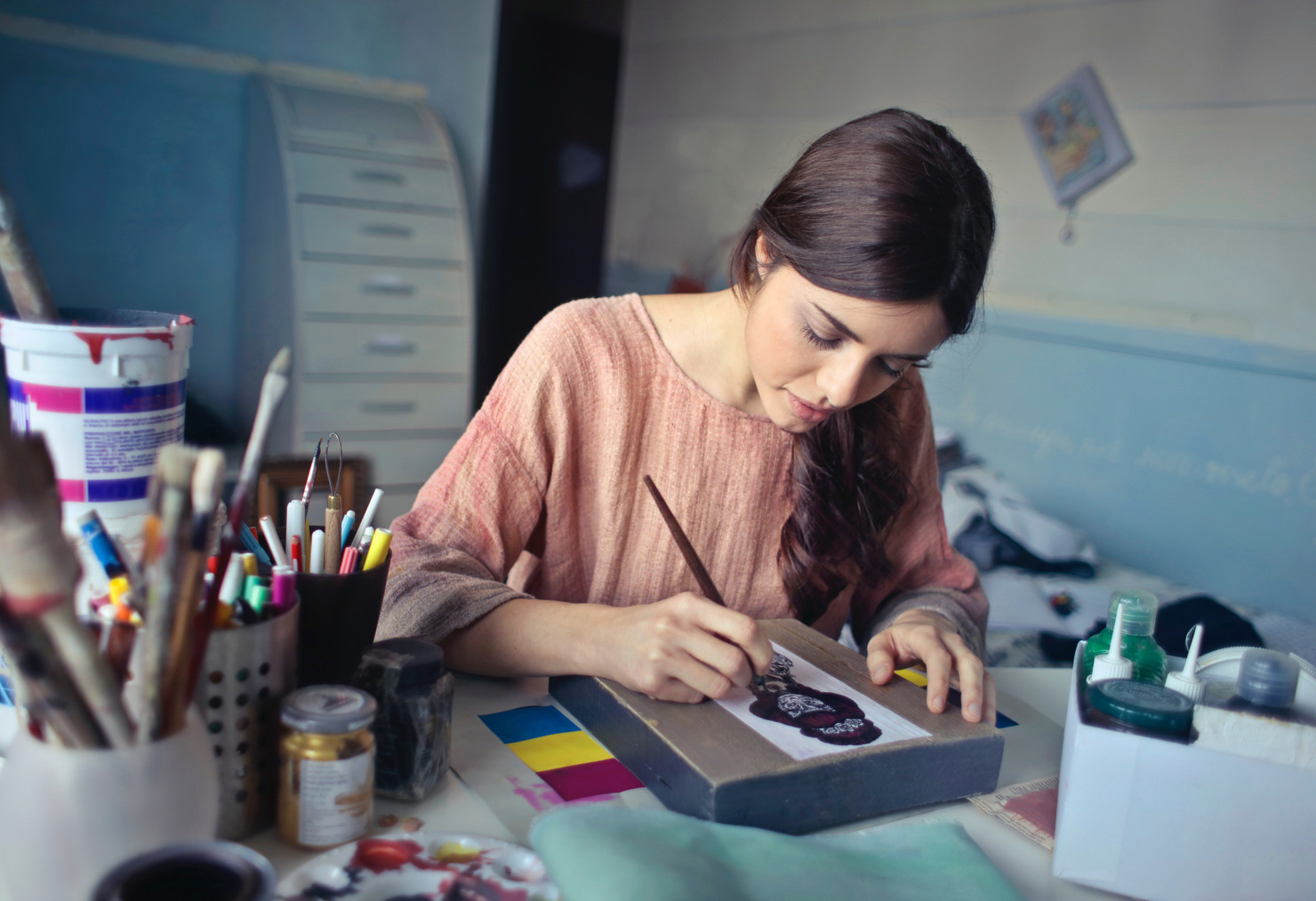As with any other undertaking, free graphic tools are necessary for completing a job efficiently. But, it can be difficult to determine which programs are effective.
This list, which contains the best tools, software, and other essential items for graphic designers, is a compilation of the both online and offline graphic tools that I’ve been investing in, and have gone through training sessions on art and design, specifically graphic design. I have focused primarily on graphic design, and I currently run my own freelance business where my primary service is provided to clients. Graphic design is among the best online jobs out there.
I believe and trust in this advice enough to recommend it myself. Due to the large availability of these products, I’m inspired to select those that have worked for me and share with you their strategies to get an edge.
These are the 15 best tools for all graphic designers. Working with the best can be highly beneficial for graphic designers.
Aside from good graphic-design hardware similar to that of other tools you might find, without which even the best computer equipment in your possession would not support you when completing projects on time.
1. Laptop – MacBook Pro
One of the joys of being a digital nomad is that you can work from any type of location you choose. That’s why so many digital nomads are self-employed. You can work from your favorite coffee shop, home office, or on the beach in Mexico!
So you want to get a computer that can manage all of your daily activities and handle the most demanding computer programs. Graphic design programs can require lots of system resources, and lead to low-quality computers failing frequently.
Initially, I began as a designer by compiling Windows several years ago. It turned out that Windows personal computers weren t ideal for my workflow, given that I did not use Adobe Creative Cloud extensively.
One of the important graphic design tools is the MacBook Pro because it can run multiple Adobe programs without crashing. I am not here to justify that you need to buy the priciest model, but this guide will not flow without it. As of 2018, I have the cheapest MacBook Pro model that is running.
2. External Hard Drive
When using applications like Dropbox and Google Drive help you stay organized, it can be challenging to simply stop using these tools as a designer and transition into a cloud environment to work from. That’s where external hard drives come in handy. If you use an external hard drive well, it is a onetime purchase you reap over your lifetime. I personally use hard drives from Seagate and have not had a single problem with them yet.
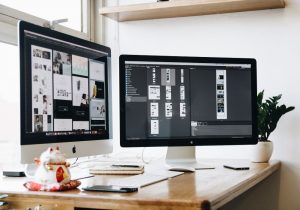
Hard shock-proof cases can be bought for around $50 on Amazon. It’s worth spending more for a hard-drive case if you’ll be traveling with it. Before traveling with your hard drive, make sure that it doesn’t have any cosmetic defects, such as scratches, dents, or scrapes. Something as simple as an accidental knock or fall can cause your hard drive to short circuit, rendering your data completely useless.
Do not be concerned about purchasing a separate external hard drive if your computer has a specific type. Make sure you purchase the right hard drive depending on the type of computer you use (i.e. Windows versus Mac).
3. Mirrorless Camera
Visual artists, as well as graphic designers, are also often good photographers. For that reason, it’s crucial that a camera always be available as a part of one’s artistic equipment.
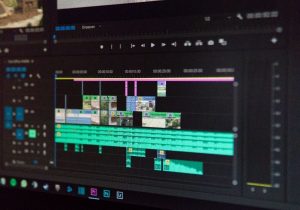
Due to the fact that you are designing a product poster and must employ some product photography for it or you merely need to take images on your work for your portfolio on your website, a good camera is a must.
These types of cameras, rather than DSLRs, are a great choice for photographers. They’re a lot lighter, so you don’t have to spend a lot on one. As a designer, you don’t always have to spend as much money as you would on a higher-end camera, so keep this in mind when making your decision.
That variety of price points for the tiny DSLR cameras include both the Canon EOS M50 and the Canon EOS M100. The separate price tags for each camera range from $500 to $600. You can purchase cameras with bundled accessories on Amazon for significant savings.
4. Apple iPad
I will tell exactly the honest truth; I went years without purchasing my own Apple iPad and/ and hadconsistently rented it off of my college. After graduating, I learned that it was crucial to have my own. No matter how big or small, an Apple iPad is one of the greatest devices for graphic designers regardless of its size.

Graphic designers can create some great digital art using their iPad, ranging from Procreate in illustrating to the Lightroom application for quick adding of artistic effects if you are redesigning an encouraging graphic. Using Procreate to produce appealing illustrations on the computer and then changing them into more elaborated illustrations on the iPad using illustrator is a big time saver and can produce superior end results.
There are a huge range of sizes available for the iPad, and unless you have reason to believe your iPad will be used for heavy pictures, it can be a smart financial decision to choose the Mini. Just be sure that the components you are purchasing are compatible with the Apple Pencil, which is used for illustrators.
5. Desktop: iMac
Because graphic design devices are necessary, so is a computer or other sort of computer. If you are just beginning in this career, the initial investment can be steep, but these equipment can make you profitable in this field, which will allow you to recoup your investment.
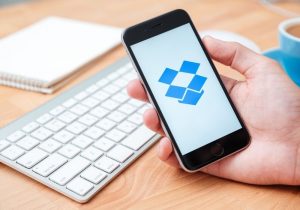
If you work a lot from home and are thinking about getting a new personal computer, know that having some desktop computer capabilities will be handy. The display of the device can be larger than a laptop, which makes it beneficial for tasks with a great deal of information.
Similar to the laptop on this list, Apple products work best with Adobe Creative Cloud. As a graphic designer, having graphic tools that allow you to work online with your on a regular basis is indispensable.
I don’t suggest Apple’s selection of desktops for you, because you don’t have to buy the most expensive one with a mind-boggling array of features you’ll never make use of. I have the 21.5-inch iMac with Retina 4K Display, and it is perfect for me. I can afford it, too, since my laptop computer is no longer functioning.
Software Tools for Graphic Designers
Now that you’ve got the hardware, you’re all set to be investing in the software. It’s essential to know you chose a high-quality software which you can depend on across a range of tasks, so once you have the software, your projects will become much simpler.
6. Adobe Creative Cloud
Adobe Creative Cloud desktop application must be taken into account when you’re looking for the best tools for graphic designers. Adobe could not be without this software program.
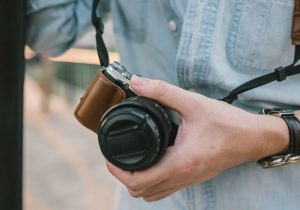
Within Adobe Creative Cloud, there’s a selection of software for a graphic designer to think about when planning any type of project: such as Illustrator, InDesign, Photoshop, Lightroom, XD, or any one of them. Unfortunately, Adobe continues to be very expensive today due to the licensing structure, which means it’s no longer a one-time purchase like it was in the past.
Instead, it is a monthly subscription or annual subscription that you have to pay for. I personally pay $50 per month, and that subscription contains access to all Adobe products, including their online-only programs, Adobe Spark.
When purchasing Adobe, ViewDesigner, or any other graphic design software, I advise you to purchase an all-inclusive subscription rather than the separate programs, as you will get more bang for your buck.
For just $15 a month, you can gain access to everything used by your ability to students.
7. Canva
Canva has become somewhat of a cop-out for graphic designers, but it’s not something I regret using once in a blue moon.
Clients even typically prefer that you make something in Canva, especially templates since they have previous experience with this program.
Contrary to other design programs that require a monthly fee, Canva’s free plan is adequate for the majority of users. However, only paying the monthly subscription fee of $12 gives you access to Canva’s considerable library of stock photos that you may use in your projects. Look over the different plans offered by Canva to discover which one works best for you.
Canva is not one of the best graphic tools for print design, but it does well to digitize digital design productions. Canva’s electronic advertisements, social media pages, and PDFs are all well supported. Canva can automatically apply the RGB color space, allowing you to concentrate on other areas of the design.
If you need to make use of templates for designs you plan to sell, I encourage you to use Canva. I’ve found that customers prefer utilizing templates for platforms they will already use, and although Canva does not have the customization possibilities of Adobe, many have no trouble with it.
8. Google Drive
There’s undoubtedly no better location to keep client-facing documents and work than on Google Drive. As mentioned previously with regard to Canva, clients enjoy using computer programs they are already familiar with. Fortunately, nearly everybody makes use of G Suite at least once a day!
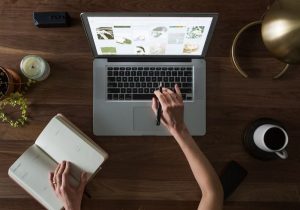
GoogleDrive not just offers a formidable storage medium for files that you offer to your customers, but additionally, it’s an outstanding place to send your competent assets to your customers as an interior designer. Your customer will probably be completely familiar with how to upload documents to you, so the job shouldn’t even be a lot more than placing your document in its folder.
One of the best graphic design programs on the market this one enables you to use the free or paid version. I’ve been using it for about eight months, and I am currently not even near the end of what is available in the free edition, so you won’t have to upgrade for a while.
9. Dropbox
Google Drive is really good for sharing with consumers, though I don’t enjoy using it to create my private design backlog. I really like to store draft versions for a minimum of one year after a project is performed just in case a client ever has an issue. It can also be useful for saving these files in order to create mock portfolios for your future clients.
Downloading Dropbox onto your computer is easy, which is why I prefer it to Google Drive. Dropbox essentially serves as an added folder on your computer, making it effortless to maneuver files whenever required.
Dropbox also offers its own word document, called a Paper Doc. You are able to make written files, share notes with your colleagues, and more using this tool. It is a breeze! Very similar to Google Drive, you can get many years with the free version.
10. Figma
Adobe Creative Cloud, my favorite version, is not the only option that Figma has. Just as with their counterpart, you can work together online in a shared pared-down version.

The software is perfect for projects that require prototyping, including app development or UX design. You can create instructions for a user to follow to complete a task, such as touching a specific screen. This software can help you bring your projects to life.
I am an Excel enthusiast, so I delight in the free version of Figma and find it perfect for me and my projects when installment is most pressing. As more storage is required in the long run I already have, I may go with a paid version for $12 a month.
Must-Have Equipment for Graphic Designers
Any person can be productive when utilizing a graphic-design product environmental health, as well as the smooth functioning of your company. I would like to point out that my business wouldn t be here without all five of these!
11. Notebook
You may not realize it, but paper notebooks are one of the most useful tools for graphic designers. While I often enjoy using my favorite apps, like GoodNotes and Procreate, nothing beats the ease and convenience of physically writing notes with a pen on paper. This is one of the more underappreciated gear for graphic designers.
Notebooks are readily available and are quite inexpensive. The end result is that you can purchase several of them directly from Amazon for as little as $10, or purchase colourful versions if you simply want to get a little extravagant. Bear in mind a good school supplies sale if you’re in the market for a notebook to conduct business in.
12. Sturdy Desk
Whether you’re a graphic designer working from a laptop or a desktop, you will need a desk or designated workspace. This is particularly important for ongoing meetings with clients; it’s unprofessional to do so while lounging on the couch.
Desks can be bought for amazing prices, so there will most likely end up being one in your budget. Maybe you would like to build your own, that possibility exists as well. As I started my piece on a Friday night after closing hours at the local Ikea, I spent around $100 on my materials.
Desks are an essential part of a career as a graphic designer that are often overlooked. If a desk is out of your budget, search for a small table that you can position in your home to serve as a workspace. When working from home, it’s important to find a balance between work and your life. Having a designated workspace can help you with achieving this.
13. Comfortable Chair
No matter what type of freelancer you are, finding a comfortable office chair is very important. This is one piece of graphic design equipment that I will not recommend skimping on this product.
If I had told you that last summer that I owned a $350 chair, you wouldn’t have believed me. But I was getting to the point where I was getting back pain from my $20 swivel chair that I had been using previously.
An ergonomic chair is one must-have item that you will want to spend your money on. There are many great deals for ergonomic chairs in office supply stores like Office Depot or Staples. Online stores like Wayfair or Overstock are also excellent places to go shopping for a chair, as is Ikea.
14. Colored Markers or Pens
Art can serve as a major inspiration for graphic designers; the basis of texture and colour are more often than not what they work with. While we commonly focus on digital art, sketching something by hand on a pad of paper can be more expedient so that we can not lose some of our original project ideas.
Because markers or coloured pens help graphic designers stay on track, it doesn’t matter what sort of markers or coloured pens you choose. I typically use a multicoloured mega pack of Crayola crayons for $8 at an outlet store in my neighborhood.
When I begin a new project, I take care of my marker pouch right from the beginning and right away begin developing my ideas with colour. This can be very helpful down the road because it’s going to be easier for me to translate everything visually!
15. Headphones
Headphones are a valuable graphic design tool whether you work from home on the beach, in shared work space, a supermarket, or some other remote location. They make private voice calls, listen to music, and participate in podcasts with coworkers efficient and cost-effective.
Using headphones while drawing can help music-designers get in the appropriate zone to complete their project. One of my preferred tricks is to listen to music with noise-cancelling headphones to better when I am focusing on generating a song.
Beats Audio as a leader in audio technology makes some of the most durable wireless headphones locklithicatemyxactivateinstantly. They’re incredibly stable and leak not even the slightest amount of noise. Stylistically, they are an excellent match for everyone, whether you’re urban or whether you travel a lot. Airpods from Apple are a great choice for travel.
So now you know one of the best tools for graphic design! Whether you’re a contract worker or work for an entity, these tools will help you achieve more success.
Make sure that you compare and contrast the prices and value of each different option before you invest in any of the options. It could be beneficial to unearth a bargain price.
